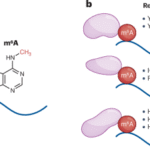In a landmark move for scientific transparency and accessibility, U.S. science funding agencies have introduced policies to ensure that federally funded research is made freely available to the public. These developments follow a directive issued by President Joe Biden’s administration in 2022, which mandated immediate public access to peer-reviewed journal articles and associated data without embargo periods, which is usually one year after publication. This policy represents a significant shift in the dissemination of scientific knowledge and aligns with a global movement toward open access. However, the implementation of such policies presents both opportunities and challenges.
The White House Office of Science and Technology Policy (OSTP) updated U.S. policy guidance to make the results of taxpayer-supported research immediately available to the American public at no cost.”
White house
All agencies will fully implement updated policies, including ending the optional 12-month embargo, no later than December 31, 2025, adds the directive.
The New Policies: A Step Forward
First of all, this is not a new move, major federal agencies, including the National Institutes of Health (NIH) and the National Science Foundation (NSF), have finalized their plans to comply with the White House directive signed by Joe Biden in 2022.
The core issue that the above directive addresses is a widespread cry by scientific stakeholders about the proliferation of payment walls to access timely cutting-edge scientific discoveries. Traditionally, research funded by taxpayer dollars was often locked behind paywalls, accessible only to those who could afford expensive journal subscriptions. With these new policies, researchers, educators, policymakers, and the general public will gain free and immediate access to cutting-edge scientific discoveries. This democratization of knowledge aims to enhance equity in education and research while fostering innovation by removing barriers to information.
Broader Implications for Science and Society
The benefits of open access extend beyond immediate cost savings. Free access to scientific literature enables broader dissemination of knowledge, which can accelerate innovation across disciplines. For instance, healthcare professionals can access the latest medical research without financial or institutional constraints, improving patient care and efficiency. Similarly, educators and students in underfunded schools or developing countries can utilize high-quality resources to advance their learning and research.
Furthermore, the policy also aligns with international trends. The European Union, for example, has implemented similar mandates under its Horizon 2020 and Horizon Europe programs. The global shift toward open access encourages international collaboration and levels the playing field for researchers in low-income and middle-income countries.
Implementation Challenges
While the policy has been lauded, its implementation raises several concerns. A major challenge is funding the transition to open access. Traditional subscription-based journals may require researchers or institutions to pay article processing charges (APCs) to publish their work openly. These costs can disproportionately affect smaller institutions, early-career researchers, and those in underfunded disciplines. It is, in fact, worse than the previous model. We should not forget that these are businesses, therefore they have a variety of ways to work around this policy. To the surprise of many, the APCs can go up to $10,000 per paper.
Smaller publishers also face difficulties adapting to the open-access model, as they may lack the financial and operational resources of larger publishing houses. Additionally, ensuring the long-term preservation and accessibility of open-access articles requires significant infrastructure investments.
Another concern is the potential unintended consequences of shifting costs to researchers (i.e., pay me if you want to publish or you’ll perish!). While some federal agencies plan to allocate funding for publication fees, these resources may not fully cover the financial burden, leading to inequalities among researchers from different institutions or regions.
Toward a Sustainable Future
Addressing these challenges will require a coordinated effort among funding agencies, publishers, academic institutions, and the broader research community. Potential solutions include establishing centralized funding pools to cover publication fees, promoting alternative publishing models such as institutional repositories, and encouraging nonprofit publishing initiatives.
Another concern is the potential unintended consequences of shifting costs to researchers i.e., pay me if you want to publish or you’ll perish!
Scientific China
Moreover, greater transparency in the pricing and costs associated with publishing could help alleviate some of the financial burdens. Policies that prioritize inclusivity and equity—such as waiving fees for researchers from underfunded institutions or developing countries—will be essential to ensure that open access truly benefits all stakeholders.
Conclusion
All in all, the push for open access to federally funded research marks a transformative moment in the history of scientific publishing. By removing barriers to knowledge, these policies have the potential to accelerate innovation, improve equity in education and research, and enhance public trust in science. However, realizing these benefits will require addressing significant logistical and financial challenges. As the U.S. joins a global movement toward open access, the research community must work collaboratively to ensure a sustainable and inclusive future for scientific communication.
References
- “U.S. science funding agencies roll out policies on free access to journal articles,” Science, November 2024.
- European Commission. “Horizon 2020 Open Access Policies.”
- National Institutes of Health (NIH). “Public Access Policy Details.”











